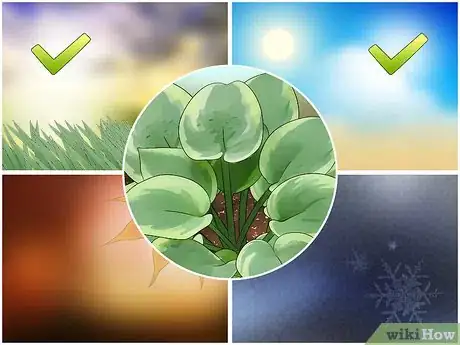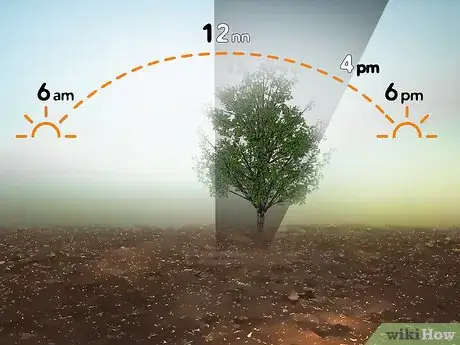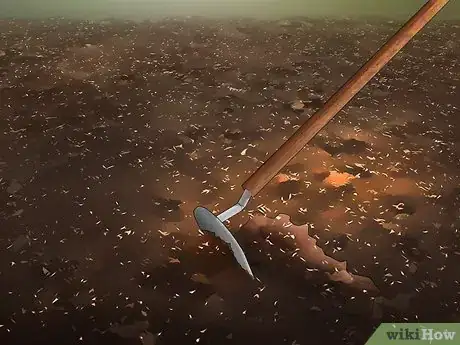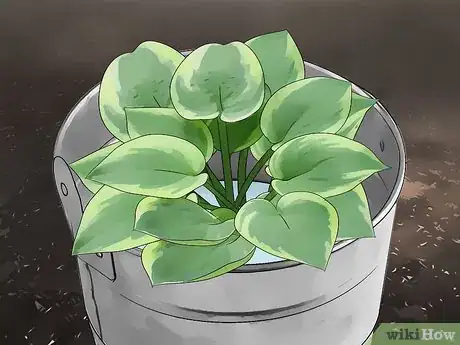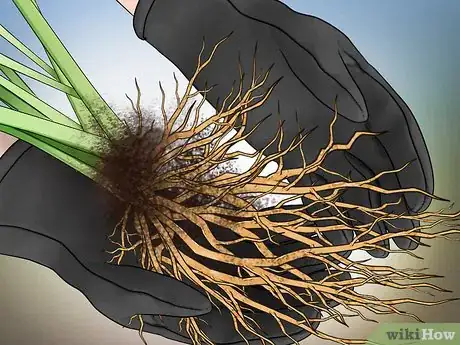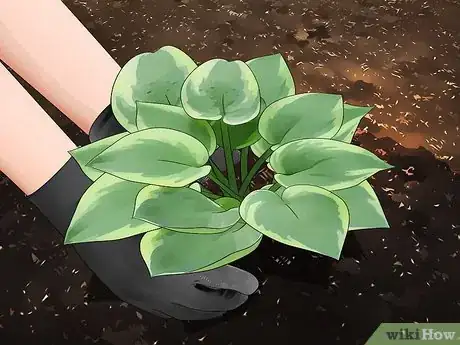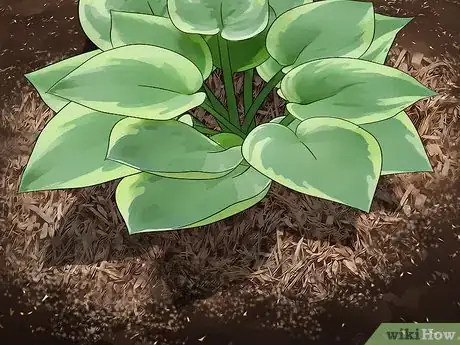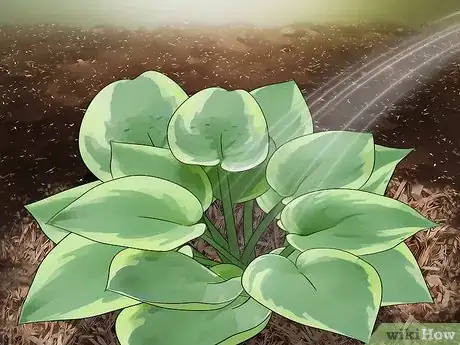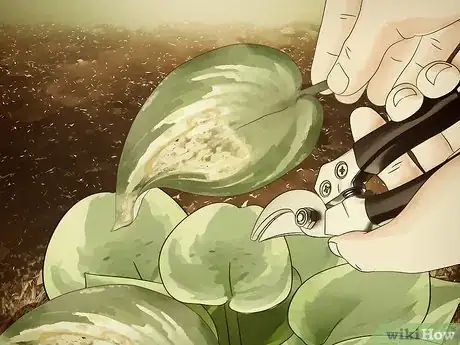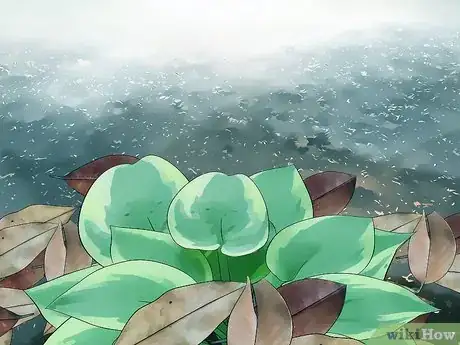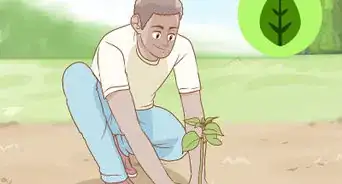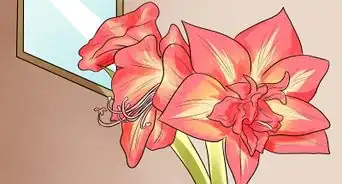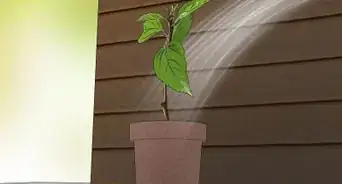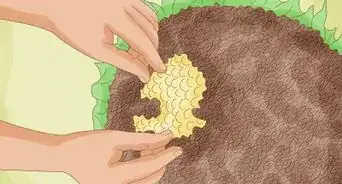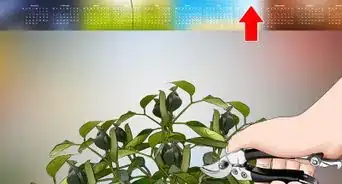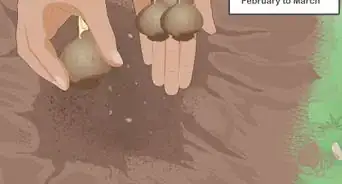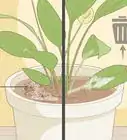This article was co-authored by Katie Gohmann. Katherine Gohmann is a Professional Gardener in Texas. She has been a home gardener and professional gardener since 2008.
wikiHow marks an article as reader-approved once it receives enough positive feedback. This article received 17 testimonials and 98% of readers who voted found it helpful, earning it our reader-approved status.
This article has been viewed 281,141 times.
Hostas make beautiful ground cover. Their large, striking leaves and small, delicate flowers are a great addition to any yard or garden. Hostas really aren’t hard to care for as long as you plant them at the right time and in the right spot, and we’ve got you covered! Check out the steps below to learn how to plant your hostas and keep them looking healthy, full, and green all spring and summer.
Steps
Getting the Seed Bed Ready
-
1Wait for the right time to plant hostas. Hostas aren't overly sensitive to cold, so you can plant them as soon as the ground is warm enough to work in the spring. Spring and late summer are the ideal times to plant hostas, because they are in active growth phases and will take root easily.
- If you're going to plant hostas in late summer, do it at least six weeks before the first frost.[1]
-
2Choose a location with the right amount of shade. Hostas are shade-tolerant plants that require minimal amounts of sunlight – though they also won’t thrive in deep shade. The ideal location is somewhere protected from strong winds and hail, that’s shaded between the hours of noon and 4 p.m., and that receives some filtered sunlight.
- You can protect hostas from sun, wind, and hail by planting them under established trees. Make sure you don’t plant them too close to the roots, however, or the hostas will have to compete for nutrients.
- Hosta’s shade tolerance depends on the type. As a rule, those with yellow leaves can survive more sunlight than hostas with green, blue, or white leaves. Blue hostas need the most protection from the sun.[2]
- Hostas will also thrive near outer building corners that still get some mild sun exposure.
Advertisement -
3Amend and till the soil. In the area where you want to plant the hostas, till the ground to a depth of 8 inches (20 cm) using a manual tiller, rototiller, or hoe.[3] Amend the soil with organic matter that will loosen the soil, discourage rodents, and acidify the soil slightly.
- Good organic matter for hostas includes aged manure or compost, peat moss, and leaf mulch.
- The ideal pH for hostas is between 6 and 6.5.
- Hostas don’t need a large space for planting. If you're planting individual hostas, the hole only needs to be as wide as the root system.
Planting the Hostas
-
1Soak the plants. Sometimes hostas come from nurseries in bags with bare roots. It’s especially important to soak the roots if that’s the case with your hostas, because it will help prepare the plants for transplanting.
- Choose a bucket or bowl that’s slightly smaller than the crown of the hosta.
- Fill the bucket with cold water. Rest one hosta crown on the rim of the bucket so the roots are soaking in the water below. Repeat for each hosta.
- Soak the plants for at least an hour before transplanting. If you're not transplanting the hostas immediately, leave them soaking to keep the roots moist.
-
2Untangle the roots. Right before planting, remove the hostas from the buckets and use your hands to gently untangle the roots. Use your fingers to carefully comb the roots so there aren't any tangles, and ensure all the roots are facing the direction they're growing in.
- Hostas, especially potted ones, are susceptible to tangled roots. The plants can strangle themselves if you try to plant them in the ground with their roots tangled.
-
3Dig holes and plant the hostas. For each hosta, dig a hole in your prepared garden bed that’s about 2.5 feet (76 cm) wide and 1 foot (30 cm) deep. Place one hosta in each hole, making sure the roots don’t become bent or tangled. Fill the hole loosely with soil, but do not pack the soil around the roots. Make sure only the roots of the plant are buried, and that the entire crown is above the ground.[4]
- Water each plant thoroughly immediately after planting.
- Leave enough space between the hostas to accommodate for their mature width. This will depend on the variety of hosta you have. If you're not sure, leave about 3 feet (76 cm) of space between the hostas.
Keeping Hostas Healthy
-
1Add a top layer of mulch. The mulch will help keep the soil moist, prevent weeds from growing, and protect the plants from rodents. After planting, add a 3-inch (7.6-cm) layer of mulch to the top of the garden bed around the hostas.
- Ideal mulch for hostas includes shredded bark, pine needles, or mulched leaves.
-
2Provide the plants with consistent moisture. Soak the soil after you plant the hostas. Keep the soil evenly and consistently moist throughout the life of the plants. Hostas that are exposed to lots of sunlight need even more water to prevent burning.
- Give the hostas about an inch (2.5 cm) of water per week during active growing phases in spring and summer.
-
3Prune dead leaves in fall. Hostas will enter a dormant state in fall and winter, meaning they won’t grow and won’t require as many nutrients. When fall arrives, prune the hostas by trimming off dead or yellow leaves.[5]
- Dying leaves can still suck nutrients from a plant, so you can help the hostas conserve energy for winter by removing these leaves in fall.
-
4Prepare the hostas for winter. Hostas are hardy plants and will survive the winter, but they’ll have a better chance of thriving if you prepare them for the colder months. After the ground freezes, cover the ground around the hostas with fallen leaves, and pack more leaves around the crowns of the plants.
- Leave the hostas packed and covered with leaves until after the last frost in spring.
- Covering the plants with organic matter will also help maintain the soil temperature and moisture level.
Expert Q&A
Did you know you can get expert answers for this article?
Unlock expert answers by supporting wikiHow
-
QuestionWhen is the best time to divide and replant very large hostas?
 Katie GohmannKatherine Gohmann is a Professional Gardener in Texas. She has been a home gardener and professional gardener since 2008.
Katie GohmannKatherine Gohmann is a Professional Gardener in Texas. She has been a home gardener and professional gardener since 2008.
Professional Gardener Hostas don't usually need to be divided, even when they get big. If your plant is overgrown, I would recommend trimming the leaves back first. If you still want to divide it, do so in the spring or early fall. Here is a good article on dividing hostas: http://www.hgtv.com/outdoors/flowers-and-plants/transplanting-hostas
Hostas don't usually need to be divided, even when they get big. If your plant is overgrown, I would recommend trimming the leaves back first. If you still want to divide it, do so in the spring or early fall. Here is a good article on dividing hostas: http://www.hgtv.com/outdoors/flowers-and-plants/transplanting-hostas -
QuestionHow do I stop deer from eating my hostas?
 Katie GohmannKatherine Gohmann is a Professional Gardener in Texas. She has been a home gardener and professional gardener since 2008.
Katie GohmannKatherine Gohmann is a Professional Gardener in Texas. She has been a home gardener and professional gardener since 2008.
Professional Gardener There's no surefire way to stop deer from eating anything. But, there are a few things you can try. Get a deer/rabbit repellent from a garden center and thoroughly spray your plant with it. I have used one that contained putrefied egg solids and worked well. Respray as needed. You could also try putting up a fence, although that is more expensive and unsightly and deer may jump it. Either way, unless the deer are eating the hostas down to the ground, the plant should be able to grow new leaves and rejuvenate itself.
There's no surefire way to stop deer from eating anything. But, there are a few things you can try. Get a deer/rabbit repellent from a garden center and thoroughly spray your plant with it. I have used one that contained putrefied egg solids and worked well. Respray as needed. You could also try putting up a fence, although that is more expensive and unsightly and deer may jump it. Either way, unless the deer are eating the hostas down to the ground, the plant should be able to grow new leaves and rejuvenate itself. -
QuestionCan l plant hostas under a pine tree?
 Community AnswerI plant mine under pines. Keep in mind you may have to provide them with extra water, though!
Community AnswerI plant mine under pines. Keep in mind you may have to provide them with extra water, though!
References
About This Article
To plant hostas, do it sometime between spring or late summer, which is when hostas thrive and grow the most. Choose an outdoor spot that receives partial shade and is protected from the elements. Before you plant your hostas, soak the roots in a bowl of water for at least an hour so they're ready to be transplanted. Then, carefully untangle the roots with your hands. Finally, plant each hosta in a hole that's about 1 foot deep and 2.5 feet wide. To learn how to care for your hostas after you plant them, scroll down!
